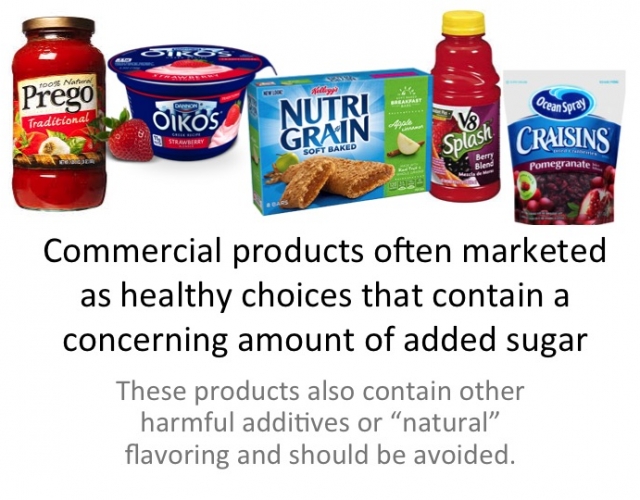You’ve likely never heard of Senomyx, a biotech flavor engineering company that works with many major corporations from Kraft Foods and Nestle to Coca-Cola and PepsiCo. This flavoring manufacturer has stated in filings with the Securities and Exchange Commission: [quote]The goals of our high potency sweetener program are to allow for the reduction of calories in packaged foods and beverages and to enable our collaborators to use product labeling referencing ‘natural flavors.’[/quote]
In line with this objective, Senomyx announced in August that its new additive “Sweetmyx S617” will soon be added to PepsiCo’s Manzanita Sol and Mug Root Beer soft drinks in the United States. This artificial ingredient will allow food and beverage companies to reduce the calorie and sugar content of their products by amplifying the sweetness of sugar and other sweeteners.
Sweetness is arguably one of the most significant tastes we experience and crave in modern culture as we are seemingly bombarded with it – sugar is added to 74% of packaged foods! Added sugar can sneak its way into your diet even when avoiding desserts like cookies and ice cream as it is found in many savory items like crackers, bread, salsa and pasta sauce.
The Power of Sweet
When we eat, the taste receptor cells on our tongues relay information to the brain signaling the specific type of flavor. Sweetness from sugar is particularly powerful and has been found to stimulate brain pathways similar to the way an opioid would. In fact, in a well-known study, rats addicted to cocaine chose sugar over the drug when given the choice because the stimulating “high” from sugar is more pleasurable.
The startling reality is that many people are actually addicted to the sensation of sweetness and food manufacturers are taking advantage of this. A typical 12-ounce can of regular soda can contain as many as 46.2 grams of added sugar, far exceeding the American Heart Association’s recommendations for sugar in an entire day. One leading brand of yogurt contains 29 grams of sugar per serving and a breakfast bar made with “real fruit” and “whole grains” lists 15 grams of sugar per serving!
Many processed foods with “healthy” marketing jargon contain a shocking amount of added sugar, as we can see in this slideshow.
Corporations have been incredibly successful adding more and more sugar to processed foods so that we keep coming back for more.
However, in light of the obesity epidemic in this country, there has been some push back to reduce sugar content of processed foods. Processed items with labels touting less sugar or lack of high fructose corn syrup are likely to be picked up by busy moms who want healthier convenient options for their kids. Unsurprisingly, food manufacturers are working to meet this demand with manipulation instead of simply creating healthier formulations. They’re seeking the best ways to reduce sugar without sacrificing the intensely sweet flavors that have us hooked and coming back for more.
In theory, a product that reduces calories and added sugar sounds like a great advancement for health. Senomyx’s new additive Sweetmyx S617 is expected to reduce calories in the two newly formulated soft drinks by 25 percent, but at what cost?
Where To Look for Sweetmyx S617 on the Label
These flavor “enhancers” are not considered actual ingredients and are not required to be listed on packaging as anything other than “artificial flavors.” Frighteningly, Senomyx’s aim is to take these additives one step further and have them labeled as “natural flavors.” Much like MSG, these flavor enhancers operate on a neurological level to produce this heightened sweet sensation, essentially tricking the brain into thinking foods are sweeter than they actually are. This sounds like anything but natural!
The most troubling aspect of these new additives is that limited testing has been done to prove they are safe for consumption. The Center for Science in the Public Interest (CSPI) has determined through public records requests that the FDA does not have detailed safety information on these flavor enhancers and the limited analysis the Flavor and Extract Manufacturers Association has done does not meet FDA standards. Many recommended tests are missing, including cancer studies, reproductive studies and screens to test how ingredients affect the nervous system. Susan Schiffman, a sweetener expert and professor at North Carolina State University has said that [quote]To put anything into the food supply with this little testing is astounding.[/quote]
How can you avoid added sugar and corporate flavor manipulation?
You won’t find Sweetmyx S617 listed on any product’s label. As the FDA is comfortable deeming Senomyx’s flavor enhancers as Generally Recognized As Safe (GRAS), avoid all processed foods that list “artificial flavors” among the ingredients where possible, to opt out of these untested additives. In addition, reference Appendix One of Mira’s book The Pantry Principle for a comprehensive list of the many different names sugar can be found under and which ones to avoid.







Thank you for this informative article….I’ve been warning people about this for a few years, and your site explains it so clearly. Just avoid the “artificial flavorings” – Thanks for letting us know where it’s being hidden!